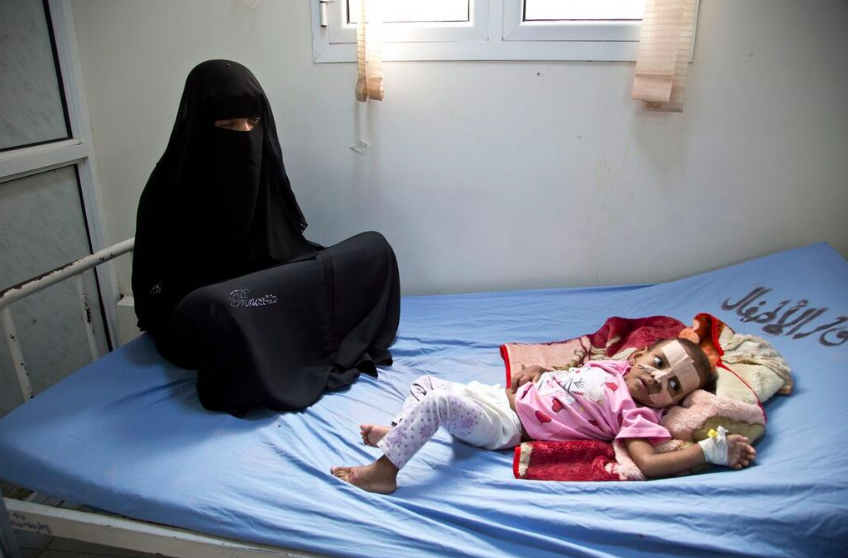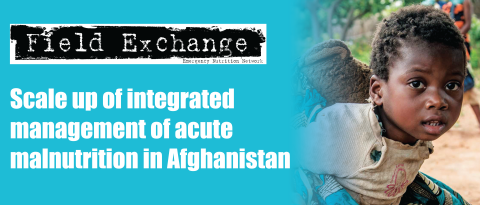Thiamine content of F-75 for complicated severe acute malnutrition: time for a change?
Summary of research1
Location: Global
What we know: Complicated cases of severe acute malnutrition (SAM) are usually severely ill with comorbidities.
What this article adds: Complicated cases of SAM are likely to have low or borderline thiamine reserves that can be rapidly depleted during refeeding. This precipitates acute thiamine deficiency, which can have acute and long-term consequences in critically ill children. F-75 thiamine content does not provide therapeutic dosage at typical volumes consumed to meet current refeeding recommendations. Infants under six months of age with SAM managed with breastmilk or diluted F100 or F75 are at greater risk of developing thiamine deficiency; breastfeeding mothers rarely receiving thiamine supplements. The authors propose that F-75 is reformulated based on recommendations to administer 200 times the recommended daily intake thiamine dose in the first few days of refeeding (up to 100 mg of thiamine /1,000 kcal; (7.5 mg/100 mL)) for early refeeding, almost 90 times more than the current F-75 content. Further studies are warranted to validate this ratio. For breastfed infants under six months old who do not receive F-75, both mothers and infants should be supplemented with thiamine during the acute phase and throughout the breastfeeding period.
Severe acute malnutrition (SAM) is a life-threatening condition requiring urgent treatment, with an under-five case-fatality rate of around 15 per cent (Fergusson, 2009). Since community-based management of acute malnutrition (CMAM) has become the standard of care, the clinical profile of severe acutely malnourished patients admitted to hospitals or inpatient therapeutic feeding centres (TFCs) has changed. These patients are usually very ill and often present with several comorbidities, such as shock, sepsis and pneumonia. Refeeding syndrome is a potentially fatal complication of patient mismanagement and can be misinterpreted as cardiac failure, pneumonia or sepsis. It is characterised by electrolyte imbalances caused by intracellular shifts secondary to refeeding-induced insulin secretion (e.g. hypophosphatemia, hypokalemia and hypomagnesemia). Insulin production and the resulting increase in glucose utilisation and thiamine body requirements may also lead to thiamine deficiency. Complicated severe acute malnutrition (SAM) patients are at risk of thiamine insufficiency (Hailemariam et al, 1985) and critically ill patients have higher thiamine requirements. The authors of this article propose that the thiamine content of F-75, the therapeutic milk formula used in the early stabilisation phase of refeeding in patients with SAM, now seems insufficient and therefore F-75 should be reformulated.
 Conditions and risk factors leading to thiamine deficiency in malnutrition
Conditions and risk factors leading to thiamine deficiency in malnutrition
Thiamine deficiency principally affects vulnerable children in communities where dietary habits rely on refined processed cereals or tubers, such as rice, wheat and cassava; notably in southeast Asia, Africa and the Americas. Reduced intestinal absorptive capacity during environmental enteropathy and malnutrition may lead to thiamine insufficiency (sub-clinical low vitamin B1 levels). Gut microbiota is affected in malnourished children, which might further affect thiamine-uptake capacity. During critical illness there is a mismatch between cellular thiamine availability and the increased endogenous metabolic demands brought on by illness, which can trigger clinical thiamine deficiency (thiamine insufficiency with clinical signs/and or low thiamine levels well below reference values) in patients with pre-existing insufficiency. Thiamine insufficiency or thiamine deficiency may be present in children with SAM for these reasons. Rapid initiation of nutritional rehabilitation during refeeding increases intracellular thiamine turnover, which, in a context of pre-existing low whole-body thiamine stores, can precipitate the onset of true thiamine deficiency and may contribute to the mortality of hospitalised SAM patients.
Consequences of thiamine deficiency in critically ill patients
Intensive care patients with thiamine deficiency may experience worse outcomes than other critically ill patients. Recent evidence suggests that thiamine administration to thiamine-deficient adults with septic shock may significantly increase survival rate (Donnino et al, 2016). The follow-up of the survivors group of an outbreak of acute thiamine deficiency in Israel in 2003, secondary to consumption of a thiamine-deficient soya-based infant formula, demonstrated long-term neurological consequences in the survivors group (Fattal-Valevski et al, 2005). This was especially significant on the children’s language development, but they could also present years later with psychomotor impairment and seizures. These data highlight the importance of early intervention when thiamine deficiency is suspected to limit long-term consequences. It also suggests encouraging the use of pharmacological doses of thiamine in critically ill and severely malnourished children at high risk of thiamine deficiency.
Thiamine in F-75 milk
Two therapeutic preparations are used in the treatment of patients with SAM: F-75 (75 kcal/100 mL) in the initial stabilisation phase and F-100 (100 kcal/100 mL) in the transitional and rehabilitation phase. A 600-mL sachet of therapeutic milk contains on average 0.5 mg of thiamine (1.1 mg/1,000 kcal, 0.083 mg/100 ml).
For the prevention of refeeding syndrome, the Cape Town Paediatric Interest Group and the Sydney Children’s Hospital suggest the administration of 1-2 mg/kg of thiamine daily during the first week of SAM treatment. However, according to recently published recommendations for refeeding syndrome for children (Pulcinic et al, 2016), thiamine should be administered in a dose of 50-100 mg intravenously or 100-300 mg orally during the first three days of refeeding; at a typical intake for a 10kg child, these children would require 50 to180 times more thiamine than they would currently receive based on F-75 (over six months) or diluted F100/ breastmilk (under six months)2. This is similar to the thiamine dosage recommended during the first few days of refeeding in adults by Stanga et al (2008), which is 200 times higher than the recommended daily intake (RDI) of thiamine in the adult population (200–300 mg). However, high-dose thiamine at initiation of treatment is not the current practice in humanitarian settings. Since it has been shown that children with complicated SAM have borderline thiamine stores, even a very cautious introduction of feedings may induce thiamine deficiency in the absence of a considerable thiamine supplementation.
The average daily intake of thiamine from F-75/F-100 is 1-2 mg at most; one to four times the RDI for this paediatric group. This is even more significant in infants under six months of age with SAM, who are at greater risk of developing thiamine deficiency. These infants do not receive RUTF or F-100 but only breastmilk or diluted F-100 or F-75, while their breastfeeding mothers rarely receive thiamine supplements.
Recommendations
Considering its exclusive use for in-hospital management of critically ill or complicated SAM patients, the authors propose that reformulation of F-75 is warranted to supply a sufficiently high dose of daily thiamine. The authors endorse the recommendations to administer 200 times the RDI thiamine dose in the first few days of refeeding, which would translate to a pharmacological dose of thiamine of up to 100 mg of thiamine /1,000 kcal (7.5 mg/100 mL) for early refeeding; this is almost 90 times more than the current F-75 content of thiamine. Further studies are warranted to validate the recommended thiamine/caloric ratio of 100 mg/ 1,000 kcal as opposed to the current 1.1 mg/1,000 kcal. Thiamine has an outstandingly clean safety profile to date, with no upper dose limit, which should encourage clinicians to consider using it.
An alternative option would be to maintain the current F-75 thiamine content and treat the complicated SAM patients systematically with oral or intravenous thiamine according to clinical indications. However, for operational reasons, it would be reasonable to reserve thiamine tablets and vials for the treatment of clinical thiamine deficiency or as a metabolic resuscitator in non-SAM critically ill patients. In low-resource settings, which rely heavily on humanitarian aid, F-75 would be an optimal vehicle for high thiamine doses to prevent refeeding complications in SAM patients.
Finally, for both breastfeeding mothers and infants under six months old who are malnourished, the diet should be supplemented with thiamine in the acute phase and throughout the breastfeeding period.
Endnotes
1Hiffler L, Adamolekun B, Fischer PR and Fattal-Vavleski A. (2017). Thiamine content of F-75 therapeutic milk for complicated severe acute malnutrition: time for a change? Ann. N.Y. Acad. Sci., 1404: 20–26. doi:10.1111/nyas.13458 http://onlinelibrary.wiley.com/doi/10.1111/nyas.13458/full
2Recommended daily intake (RDI) for children is: 0-6m: 0.2mg; 6m-1y: 0.3mg; 1-3y: 0.5mg; 4-8y: 0.6mg.
References
Donnino MW, Andersen LW, Chase M et al. 2016. Randomized, double-blind, placebo-controlled trial of thiamine as a metabolic resuscitator in septic shock: a pilot study. Crit. Care Med. 44: 360–367.
Fattal-Valevski A, Kesler A, Sela B-A et al. 2005. Outbreak of life-threatening thiamine deficiency in infants in Israel caused by a defective soy-based formula. Pediatrics 115: e233–e238.
Fergusson P and Tomkins A. 2009. HIV prevalence and mortality among children undergoing treatment for severe acute malnutrition in sub-Saharan Africa: a systematic review and meta-analysis. Trans. R. Soc. Trop. Med. Hyg. 103: 541–548.
Hailemariam B, Landman JP and Jackson AA. 1985. Thiamin status in normal and malnourished children in Jamaica. Br. J. Nutr. 53: 477–483.
Pulcini CD, Zettle S and Srinath A. 2016. Refeeding syndrome. Pediatr. Rev. 37: 516–523.
Stanga Z, Brunner A, Leuenberger M et al. 2008. Nutrition in clinical practice – the refeeding syndrome: illustrative cases and guidelines for prevention and treatment. Eur. J. Clin. Nutr. 62: 687–694.


